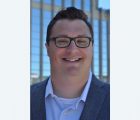Editor’s note: This article is part I of a series that highlights the careers of eight actuaries who work in organizations that the CAS categorizes as, for lack of a better word, “other.” The successes of these actuaries show what it takes to venture into unchartered territory. This article features four actuaries. Part 2, to be published in the November/December AR, will feature the remaining four.
Most members of the Casualty Actuarial Society work for property-casualty insurers or serve as actuarial consultants. This makes sense, as they learn their craft in the context of property-casualty insurance.
However, fewer than three percent of members work in “other” types of organizations. Taking a look at the work these actuaries are doing provides insight into the growing need for actuaries in nontraditional roles or industries.
While each actuary has his or her own story, they all share two attributes in common. First, they possess a willingness to charter the actuarial road less taken. Second, each one mentions the role of family as part of his or her career decisions. They also offer advice to actuaries who either want to broaden their career horizons or be more successful in their current careers, or both.
Improving Hospital Care and Efficiency

Sharon Carroll, Analytics Director, Clinical Intelligence
Sharon Carroll’s interest in business analytics and desire to improve her work-life balance led her to a new field: health care analytics.
As the director of analytics for Clinical Intelligence, she exercises her actuarial skills to help hospital administrators improve quality of care, business processes and revenue potential by reducing unnecessary clinical variation and costs. In her current position, she deploys analytical skills quite differently than she did as a property-casualty actuary.
“It’s very similar in approach to actuarial consulting work, but the majority of actuarial work was usually reserving-based,” she explains. As in her former property-casualty actuarial positions, she determines the appropriate analytics to measure a problem in order to find and implement a solution.
Carroll began her actuarial career at Everest Reinsurance, where she worked for 13 years. As a mother of three children, she continued her actuarial career part-time, working for various actuarial consulting firms including KPMG LLP. Traveling, however, made the work-life balance difficult.
 She found that balance when the president of Clinical Intelligence, whom she knew through her network, was looking to expand her firm’s analytics capabilities. “It was being at the right place at the right time,” she says.
She found that balance when the president of Clinical Intelligence, whom she knew through her network, was looking to expand her firm’s analytics capabilities. “It was being at the right place at the right time,” she says.
Being an actuary makes a difference to the hospital executives she serves. Because they respect the profession, “it carries some weight and recognition when I tell them I am an actuary. That has helped as well,” she says.
Carroll most enjoys the challenge of exploring a “pile of data” to find answers to challenges that hospital executives face. “There is a lot of data,” she says, and “there are many small-to-medium-sized hospitals that don’t have the time or staff to analyze it thoroughly.”
There is a multitude of applications for hospital data. For example, she looks at what hospitals can do when patients have gaps between recommended treatments and actual received care in areas such as immunization or diabetic control. Closing gaps in care can significantly improve quality scores for hospitals. Analytics, combined with a focused approach for addressing the gaps, improves health care while also providing strategic advantages for hospitals.
Carroll also analyzes clinical variation, which is the difference in cost or treatments for patients with the same diagnosis. “We built analytics and metrics and a framework of analysis to help hospitals find the variations so that the hospital executives can improve consistency and quality of care.”
Another example considers hospital readmission rates by diagnosis and cause. Beyond the many reasons why hospital executives want to avoid unnecessary hospital readmissions, the Affordable Care Act imposes penalties if readmission rates are too high.
Further, Medicare will not cover a full hospital stay if the length of that stay is above the geometric mean for that diagnosis. By deploying data analytics, “we help the hospital executives see what is driving up their length of stay costs,” Carroll says. Often, it is as simple as finding that many hospitals do not discharge on weekends, which unnecessarily drives up length-of-stay costs. “You just need the right data in the right graph,” she adds.
Acquiring New Skills
Applying her analytics capabilities outside the property-casualty realm meant acquiring new skills and adapting to different terminology. “There’s much more programming than what I did as an actuary before,” Carroll says. Part of her role is to embed analytics into Clinical Intelligence’s cloud-based software program, which enables hospital executives to quickly access analytical results and address problems sooner.
Being adaptable and willing to learn more are also important for finding opportunities beyond property-casualty insurance. “There is so much opportunity in different industries and definitely actuarial skills are appreciated,” she adds.
To pursue the business intelligence side of analytics, she recommends considering “whom you know in different industries and listen[ing] to the problems … A lot of it will mean using volumes of data to understand what is causing the challenges they face and being able to tell a story to help identify and fix them,” she observes, and “actuaries are in such a good position to do that.”
Actuaries should keep up with their networks and the profession through publications, webinars and being involved in actuarial organizations such as the Casualty Actuarial Society, she says. “The opportunity could come from a place where you least expect it.”
Pursuing Diverse Research

Bill Wilt, President, Assured Research, LLC
Bill Wilt began Assured Research, LLC, after taking an unconventional actuarial career path. He worked for five years at Prudential Reinsurance (n
ow Everest Reinsurance), spent five years as a credit analyst at Moody’s Investors Service, earned a master’s degree in business administration, and worked as an equity analyst at Morgan Stanley.
“I love doing research on diverse topics in insurance and reinsurance,” Wilt says. “I thought there was a market opportunity to pursue and wanted to be my own boss … and with the support of my family, it was an easy decision,” he explains.
His company offers research and insight via subscription, customized analysis by client request, and insurance education. Wilt started the company in 2011, and it has been growing ever since. Subscribers include insurers, reinsurers, brokers and investors that control $125 billion in premium. “With the support of our long-standing and new subscribers, Assured Research has been moving forward for five years,” he says. “We aim to reward their trust with every piece of research we publish.”
Just as Wilt’s actuarial career is off the beaten path, so is the firm’s research. The company reaches beyond conventional insurance measures to find actionable insights from different angles, such as other industries, events or social trends.
For example, Assured Research studied the impact of the recent Panama Canal expansion, examining how massive infrastructure spending at ports in the United States could increase demand for marine and property insurance. Recent work also focused on the nationwide trend of deregulating occupational licensing and explored business development opportunities for E&O insurers.
By not being “constrained,” Assured Research can “cast a wide net” to ensure that its studies are unique. The company also avoids topics already well considered. Titles of Assured Research reports for 2017 include: “A Tale of Three Types of Inflation,” “What Insurance Lines Benefit from the Trump Economy?” and “Auto Insurance: The Used Car Market is Crashing.”
Thinking Expansively
Just as Wilt’s company includes nontraditional data sets for its research, he believes actuaries should “think expansively” beyond conventional sources to find more insight. “I am a big believer in marrying data from other sources,” Wilt says. As one example, the company examines the growth of attorney advertising, driven by an emerging asset class called third-party litigation funding, as a social inflation indicator. “Advertising trends for attorneys has grown at the fastest clip for all goods and services,” he observes.
Thinking expansively also applies to considering other roles or industries beyond conventional actuarial responsibilities, such as financial analysis, or joining the Insurtech movement. For actuaries who want to start their own companies, he emphasizes that support from family and friends — and patience — are critical. “It takes time to establish credibility and relevance. Give it time before you declare a new venture successful or not.”
Of course, Wilt adds, “being mindful of competition matters too. If an actuary turns to consulting, they should consider finding a niche where they’re knowledgeable and passionate and can offer something larger competitors can’t.”
Being Open to New Industries
Robert Anderson, Actuarial Manager, The Hertz Corporation
Robert Anderson believes that actuaries should be willing to broaden their career horizons beyond working for an insurance company or being a consultant.
Anderson’s role as the actuarial manager for the rent-a-car company Hertz is vast and diverse. Hertz is a self-insurer for both general and auto liability for its locations in the United States, Canada and Europe. In the United States, Hertz is also self-insured for workers’ compensation.
Besides calculating rates and claims liabilities, Anderson must keep current on the laws and regulations for each state and nation. “Each jurisdiction has its own regulations and particularities with insurance, so our self-insurance strategy might be different in each place,” he says.
In Europe, Hertz has a wholly-owned insurance company that only writes coverage for its rent-a-car business. “This subjects Hertz to regulations and costs associated with managing an insurance company,” he explains. In the United States, Hertz runs a captive and files for self-insured status in each state. Hertz also has a fronting agreement with a commercial insurer in states where self-insured status is not possible due to lower volumes of rental vehicles.
Managing liability at Hertz is complicated because there are different reasons for exposure. Further, the potential liability is larger than it may appear since most drivers have personal auto coverage.
Most of Hertz’s auto liability exposure is from assuming liability. This can happen either from the renter purchasing a fronted insurance policy at the counter or from Hertz engaging in corporate contracts. With corporate contracts, Hertz might agree, for a fee, to either absorb some of the liability up to certain limits or provide the counter insurance product. Also, Anderson says, “when someone rents a car in most states, your own insurance is primary but in some states the insurance follows the vehicle, not the driver.”
There is also potential for vicarious liability. Since the nature of rental vehicle companies is to assure speed of business, confirming drivers have proof of insurance is not always possible. Hertz can also be deemed liable for uninsured motorists. Liability is also possible by virtue of the company owning the car in an accident. However, federal law protects rental car companies from paying out more than the minimum limits in each state in such cases.
Entering a New Industry
Anderson began his career as a life and health actuary for Conseco Financial Group, which includes insurers such as Colonial Penn Life Insurance Company. After two-and-a-half years, he became interested in property-casualty insurance. He worked at Westfield Insurance for 12 years, growing into the position of leading the risk capital modeling function.
While he loved his job, his wife encouraged him to explore other opportunities being offered by actuarial recruiters. Learning a new industry and solving insurance challenges from a different perspective attracted him. “I knew I would be able to make a big impact to a large organization very quickly,” he says.
His actuarial role is now expanding into risk management, where he is active in renewing other lines of commercial insurance, including property, excess, umbrella, directors and officers, crime and other financial protection coverages. Hertz is also contemplating the issues related to the regulation and insurance of autonomous vehicles if they become part of Hertz’s fleet. Anderson sees expanding the actuarial role into business analytics in the future.
Looking Beyond Insurance
Anderson admits having been uncomfortable with moving outside of his former actuarial duties at Westfield, but then he realized that he was limiting his career potential. “If you define yourself by your profession rather than by your skill set, it becomes difficult or uncomfortable to leave a more traditional role within the insurance industry,” he observes.
This reluctance to work for a commercial business rather than for an insurance company has made it difficult for him to expand his staff. Actuaries, he says, will typically choose working for an insurance company, he explains. “Many actuaries have very broad and transferable skill sets they can offer to different companies … Actuaries could benefit from becoming more open to those opportunities.”
Exercising Baseball Passion

Mike McMurray, Chairman and CEO, Hillsboro Hops
Mike McMurray applies his actuarial experience as majority owner, chairman and CEO of the Hillsboro Hops, a minor league baseball team serving the Arizona Diamondbacks.
“My wife of 40 years and I have been baseball fanatics from day one … Outside of family, baseball was our passion,” McMurray says.
After starting his actuarial career at Fireman’s Fund Insurance Company and later becoming a consultant with Milliman, he retired after 25 years to pursue his baseball passion. He applies his communication skills from his actuarial career to work with major league affiliates, league partners and corporate sponsors. “The thing I did best as an actuary was to convey technical things in a way lay people thought they understood,” he says. “In running a minor league baseball team, it is very much the same thing.”
His communication skills are also important for working with city leaders. He has owned teams in Missoula, Montana; Yakima, Washington; and now, Hillsboro, Oregon.
Players desiring to play professional baseball generally begin their careers at short-season A-level teams such as the Hops. “We are essentially the kindergarten of player development,” he explains. “We get the kids out of school, teaching them professionalism while giving them an opportunity to play.”
Drawing from his experience as an actuary, he offers professional advice to the newest baseball players. Many entry-level baseball players and new actuaries tend to be overconfident, which can impede success, he observes. Just as new actuaries need to avoid behaving like the smartest people in the room, he tells his players, “Don’t act like you are God’s gift to baseball.”

This is a tough sell for young baseball players when fans clamor for autographs. He reminds his players that the vast majority of them, around 90 percent, will not make the major leagues and in five years, their autographs will be irrelevant. For actuaries, it means that “no matter how smart you are, if you do not have clients, you don’t eat very well.”
This approach gave him a competitive advantage when vying for actuarial projects. “I loved competing with someone who I knew had an inflated ego because I knew I could relate to the client a whole lot better,” he recalls. McMurray explains that actuarial projects are a “necessary evil” for clients, so making the project “a little less painful” by communicating well helped him secure actuarial work.
Actuarial Opportunities in Baseball
McMurray sees great potential for actuaries who want to apply their analytical skills in baseball, but they must start on the ground floor.
“There is a statistical arms race in baseball,” he observes, and “an explosion of data.” Virtually every professional baseball team has its own staff of analysts trying to use data to get a competitive advantage, he adds. The movie Moneyball, he explains, “started something really important, looking at numbers in a different way and paying attention to those rather than gut feel. But it is just the first salvo.”
Applying analytics effectively in baseball has plenty of room for growth, McMurray says. Analytics “can be useful if you put it in the proper perspective,” he observes, but “not being able to identify truly useful data is still an issue.” The biggest drawback, he observes, is that people need to understand the limits of analytics.
There are also exciting and new analytical concepts for baseball. One is exit velocity, which is how fast the ball comes off the bat upon impact. While it can be measured quite well, the question becomes how many observations are necessary before determining if a player is better than average. “This is still a work in progress,” he observes.

Another exciting development in baseball analytics is Statcast. It provides a set of tools, including multiple cameras and radar guns, to better analyze player movements. For outfielders, as an example, Statcast helps measure the route efficiency of players trying to reach the ball. By measuring the distance and dividing it by the straight line, an analyst can determine a player’s route efficiency.
Such information is useful for training and placing outfielders in the best defensive field positions. It also provides better data to evaluate where a player is likely to hit a ball, so strategists can compare that with the path outfielders take to reach the baseball.
While statisticians are serving as baseball data analysts, McMurray favors the actuarial approach to interpreting data meaning. Analysts straight out of school, instead of actuaries who understand context, he observes, do not necessarily have the breadth of experience necessary to draw conclusions and make the analysis as useful as possible.
For example, a data scientist can deploy multiple tools for analyzing baseball statistics. However, there is a tendency to look at only a few observations and draw an absolute conclusion. An actuary “will understand the credibility limitations of small data sets and will seek out additional information.”
By combining actuarial experience with his love for baseball, McMurray’s experience shows that being a good communicator, with a dash of humility, can help baseball players — and actuaries — improve their game.
Annmarie Geddes Baribeau has been covering actuarial topics for more than 25 years. Her blog can be found at www.insurancecommunicators.com.










